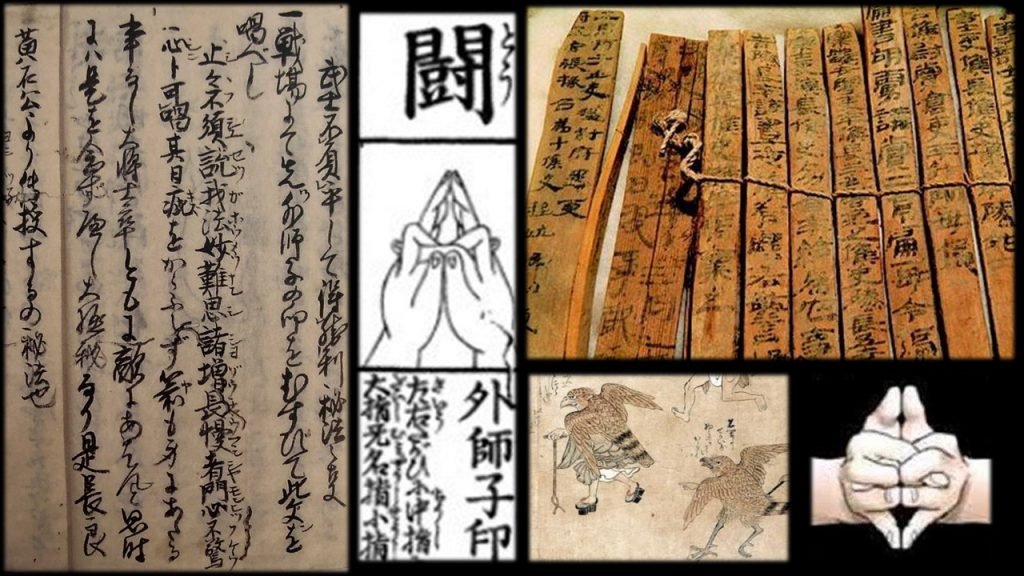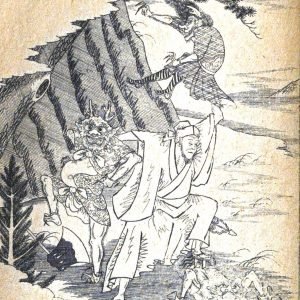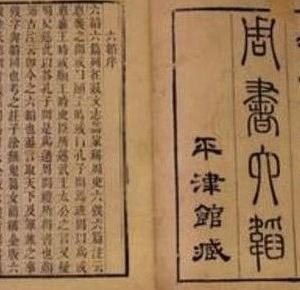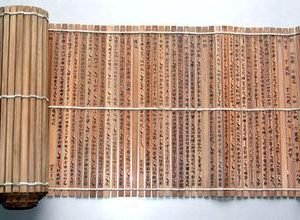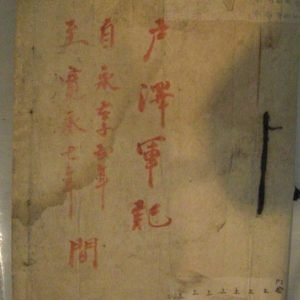One of the things about social media that I have come to enjoy is the interacting with people who share the same interest as me, namely Bujinkan Martial Arts and ninjutsu history.
Today a Facebook friend asked me a question about a recent post I made regarding the relationship of the Gyokko Ryu to the ancient Chinese military science manuscripts known as the Sanryaku (三略) and the Rikuto (六韜). I’ll repeat part of the post here for sake of clarity for the first-time readers;
Both texts were allegedly written by Ryosho 呂尚 (Jiang Ziya in Japanese), a Chinese noble and military strategist who helped the Kings Wen and Wu of Zhou overthrow the Shang in ancient China. Later, in 218 BCE, the Sennin Ko Sekiko 黄石公 (Huang Shigong in Chinese) is said to have passed on this knowledge to Cho Ryo 張良 (Zhang Liang in Chinese). After helping Liu Bang ascend to the throne by defeating Xiang Yu and establishing the Han Dynasty, Zhang Liang remained as a key advisor and finally retired to Hakuun Temple on Hakuun Mountain to devote the rest of his life to Taoism.
The texts finally made their way to Japan around the middle of the first millennium and allegedly became the source for all martial arts that later developed in Japan, mainly at the Kurama Temple.
The question I was asked today is, how do I know that the Shinobi of Iga and Koga were actually influenced by the writings of Ziang Liag (Cho Ryo) and Huang Shigong (Ko Sekiko)?
My response to this inquiry is as follows. There are many occasions where old Japanese manuscripts on ninjutsu have mentioned that the art has its roots in these texts. Especially the Tiger Scroll of the Rikuto as it deals with guerilla warfare and espionage. A simple search into the subject will reveal several sources where this can be confirmed.
But I would like to discuss a particular text that gives us a clue about the importance of these two men to the history of ninjutsu’s origins.
In the recently discovered and somewhat famous Koka shinobi documents of the Watanabe family there is a 1792 CE manuscript called the “Jiyou Shu Nukigaki” (侍用集抜書). In short, this is a kind of personal notebook, a collection of passages taken from the multivolume work on military science and ninjutsu titled the “Gunpou Jiyou Shu” (軍法侍用集) that the author thought of as being of importance.
Keep in mind this was the notebook of Watanabe Noritoshi (渡辺規俊), a historically authentic Koka-shinobi for the Tokugawa Shogun. So, if he thought the passages were important, I will go with that as well. By the way, there is no doubt to the validity of the Watanabe family’s ninjutsu documents. They are all 100% authentic.
In his Nukigakisho notebook, Noritoshi copied the following passage;
武士が無傷で勝利を得る秘法の事
The secret method for a warrior to win without a scratch
戦場でまず外獅子の印を結んで、次の文を唱えよ。
On the battleground, firstly form the “outer lion” mudra and chant the following
止々不須説我法妙難思諸増長漫者門必不驚心 と唱えよ。
Chant , Shi Shi Fu Jyu Setsu Ga Hou Myo Nan Shi Sho Zou Cho Man Sha Mon Hitsu Fu Kyou
その日は手傷を負わず、矢も体に当たる事がない。
On that day you will receive no injuries, even arrows will miss you
大将・士卒ともに、敵に遭遇すると思った時にはこの文を念じよ。
Whether you are a general or low-ranking warrior, remember this sentence when you think you will encounter an enemy
この法は秘中の秘である。これは張良・
黄石公から伝授される秘法である。 This method is the secret among secrets. This is the secret method as passed on (to us) by Cho Ryo (Ziang Liang) and Ko Sekiko (Huang Shigong).
So here it is in black and white so to speak. The shinobi of Iga and Koka were most definitely influenced by the Sanryaku and Rikuto. So much so it seems that the teachings are found at the very center of a practice most commonly associated with ninja and ninjutsu. That is the Kuji-In or mudra hand positions that are said to give the ninja their special powers.
Even the legends of Minamoto Yoshitsune were influenced by these books. The scroll that Yoshitsune stole from Kiichi Hogen, the Tora no Maki, was actually a revised edition of the Sanryaku and Rikuto that had been passed down for generations at the Kurama Temple by the Izumo Shugenja and Yamabushi.
I do not mean to “conflate” shugenja with shinobi. I agree that you cannot draw a direct line from En No Gyoja, the founder of shugendo, to the ninja. But the shugenja followers of En no Gyoja did need to protect themselves in the mountains. The martial arts and fighting skills that these men developed was based on their skills in mountain warfare and their shugendo beliefs. Over time, some branches of this yamabushi Heiho (mountain ascetic military science) developed into ninjutsu. It would not be correct to say that shugenja, or at least all shugenja, were shinobi or ninja. But indeed, it would have been one of the most useful covers for a shinobi while travelling through the country.
If you are interested in this kind of thing, I will cover a lot more information on this topic in my upcoming book, The Hidden Lineage II.
Sean Askew – 導冬 Dōtō
Bujinkan Kokusai Renkoumyo
July 9th, 2020

